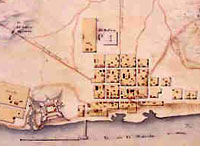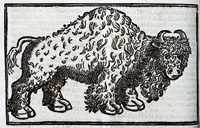Caprock Canyons State Park and Trailway [TX]
The escarpment's scenic canyons were home for Indians of several cultures, including the Folsom culture of more than 10,000 years ago. The region's historic era began when Spanish explorer Coronado traveled across the plains in 1541. After Spanish colonies were established in New Mexico around 1600, two-way trade between Plains Indians and New Mexicans began and gradually increased. The Plains Apache acquired horses and became proficient buffalo hunters. They were displaced by the Comanche, who arrived in the early 1700s and dominated northwestern Texas, until they were finally subdued in the 1870s. During the Comanche reign, trade prospered and New Mexican buffalo hunters, known as ciboleros, and traders, known as Comancheros, were frequent visitors to this area. Las Lenguas Creek, a few miles south of the park, was a major trade area, and a site excavated on Quitaque Creek has produced artifacts indicating that it may have been a cibolero camp.
The park offers tours and educational and recreational events and programs.

